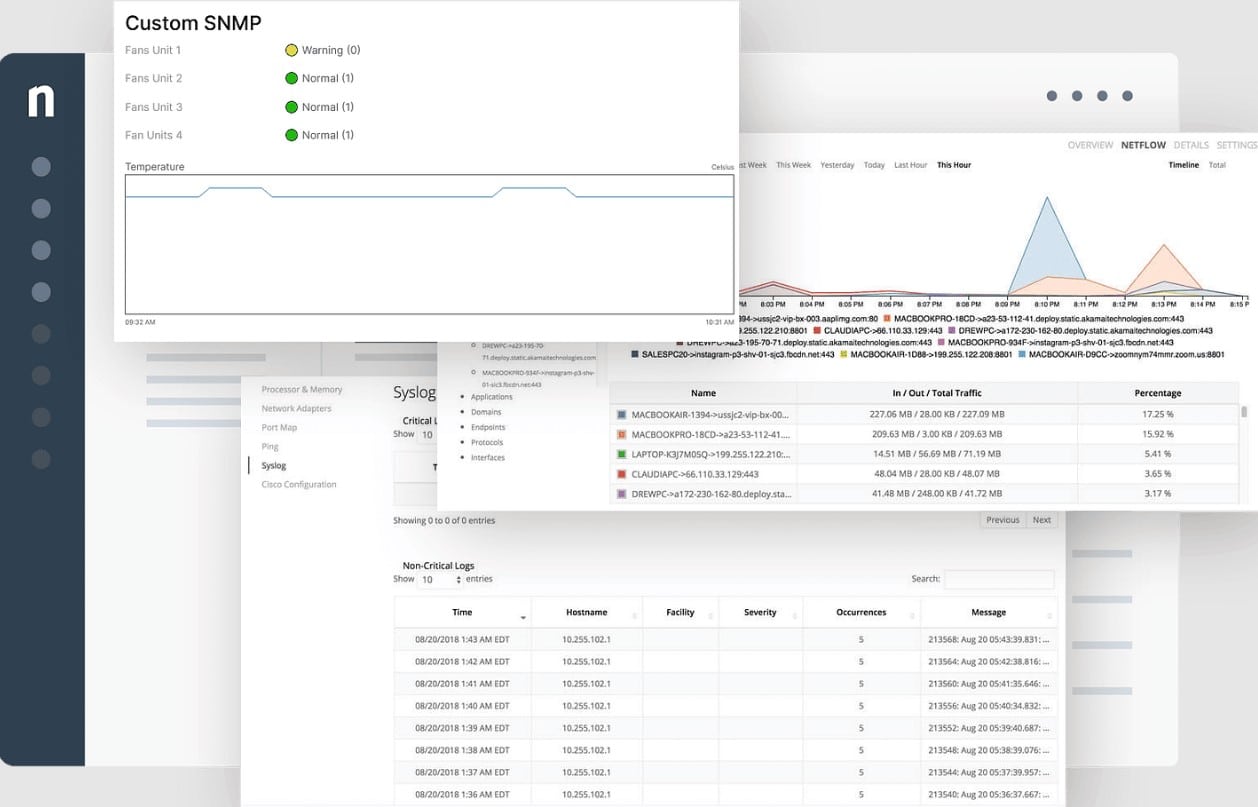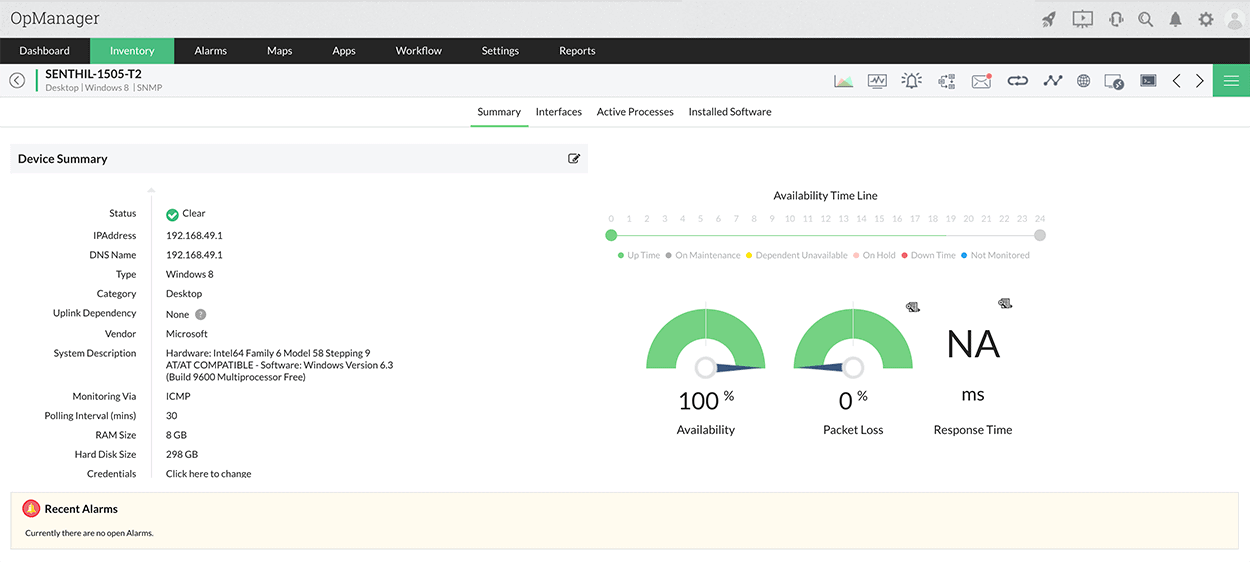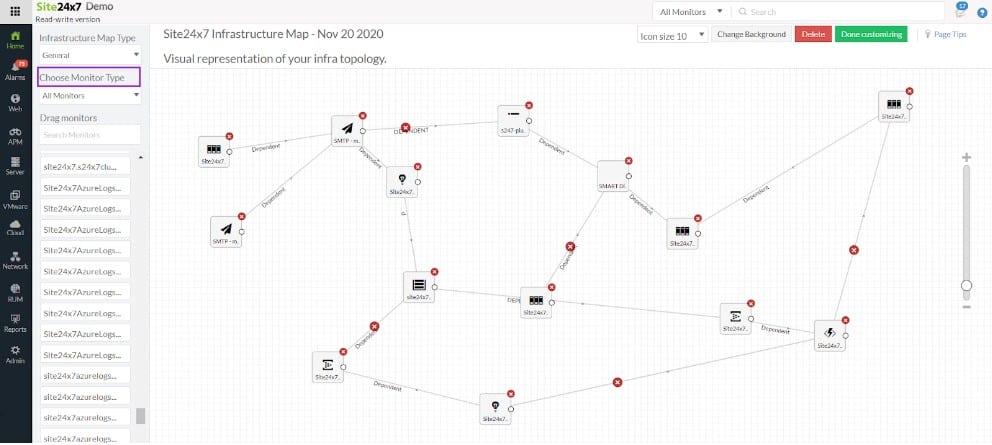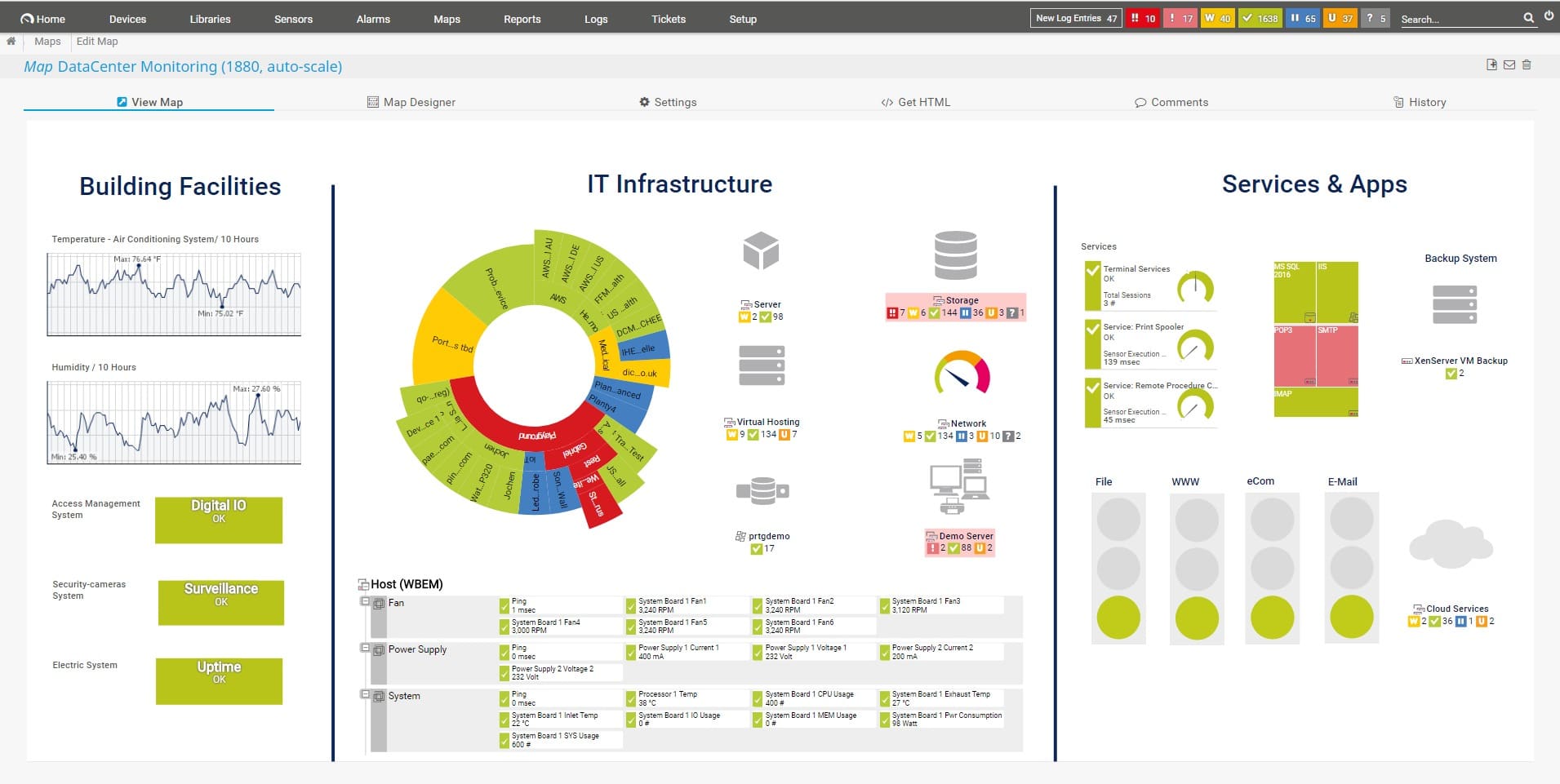We may earn a commission if you make a purchase through the links on our website.
The Best Microsoft Network Monitor Alternatives
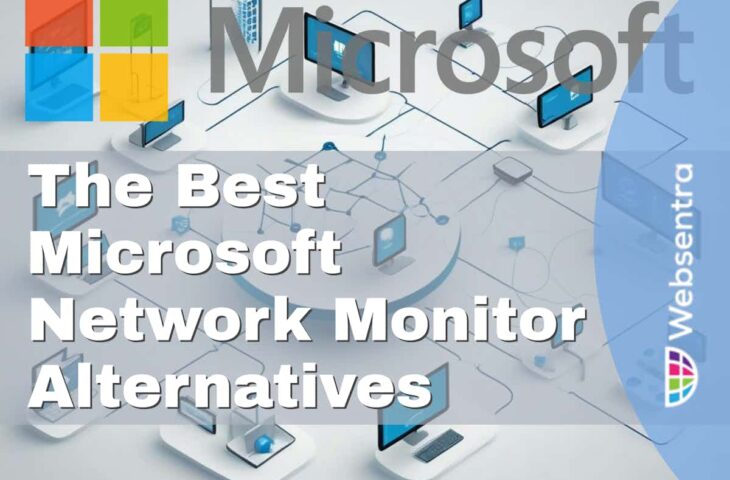
UPDATED: January 28, 2025
The Microsoft Network Monitor acts as a packet analyzer, capturing, viewing, and analyzing network traffic data. It is an extremely helpful tool for network administrators wanting to identify and mitigate network issues in real-time. Unfortunately, Microsoft discontinued it in 2014 and switched its users to Microsoft Message Analyzer (MMA), also withdrawn in 2019.
Here is our list of the best Microsoft network monitor alternatives:
- NinjaOne – EDITOR'S CHOICE A robust RMM platform that offers comprehensive visibility and management of devices, including real-time monitoring, patch management, service desk, and intelligent alerts. Start a 14-day free trial.
- ManageEngine OpManager – FREE TRIAL A network device status monitoring package that can also track the performance of endpoints. Available for Windows Server, Linux, AWS, and Azure. Get a 30-day free trial.
- Site24x7 – FREE TRIAL This cloud-based package of monitoring tools includes monitors to watch over endpoints, networks, applications, Web assets, and cloud services. Get a 30-day free trial.
- Paessler PRTG Network Monitor – FREE TRIAL An on-premises network monitoring tool that covers a wide range of components, offering real-time monitoring of network traffic and availability of servers. Start a 30-day free trial.
- Wireshark A free and open-source network protocol and packet analyzer. It is an essential tool for in-depth network traffic analysis.
- NetworkMiner by Netresec An open-source Network Forensic Analysis Tool that captures, analyzes, and visualizes network traffic.
- LogicMonitor A cloud-based automated performance monitoring solution that tracks all aspects of infrastructure and systems.
- SolarWinds NetFlow Traffic Analyzer (NTA) A network monitoring tool that provides real-time visibility into bandwidth performance using NetFlow monitoring technologies.
- ManageEngine NetFlow Analyzer A flow-based network traffic monitoring tool that offers real-time visibility into bandwidth performance using various flow technologies.
- Auvik A cloud-based network management and monitoring software that simplifies and automates network monitoring and management.
This is why old Microsoft Network Monitor users are still looking for suitable alternatives, ever since its discontinuation in 2014. These users, (mostly network admins) are always looking for Microsoft Network Monitor alternative tools to give them real-time visibility into their network's performance, traffic flow, and potential problems.
In this article, we will come up with the best tools that can replace Microsoft Network Monitor. We will review their key features, free trials or demos, pricing, and benefits.
The Limitations of Microsoft Network Monitor
While the Microsoft Network Monitor has been a valuable tool for diagnosing and repairing network problems and applications, it does have some limitations.
Here are a few drawbacks that make it unfit for today's emerging technological landscape
- No Longer Under Development Microsoft Network Monitor is an archived protocol analyzer that is no longer actively developed. As a result, this tool has no future updates or improvements, making it outdated and ineffective than newer, more up-to-date alternatives.
- Limited Compatibility Microsoft Network Monitor is specifically designed for the Windows operating system and so, it lacks easy compatibility with other platforms. This monitoring tool is highly limited for organizations with heterogeneous network environments that include non-Windows platforms.
- Lack of Advanced Features Microsoft Network Monitor does not have all the advanced features found in other alternatives. Some of these features have become necessary for modern and comprehensive networking monitoring. Some of these features include real-time analytics, advanced filtering options, automation, and customizable dashboards.
- Complex User Interface Microsoft Network Monitor has an underdeveloped and old-looking user interface, which is also quite complex and challenging to navigate. This UI can hinder users' efficiency and ease of use, especially if they are not well-versed with packet analysis tools. These limitations require new, feature-rich, and efficient alternatives to Microsoft Network Monitor.
The Best Microsoft Network Monitor Alternatives
We have ranked the best alternatives to Microsoft Network Monitor depending on their key features, ease of use, and reliability. Let's have a look!
1. NinjaOne – FREE TRIAL
NinjaOne is a robust remote monitoring and management (RMM) platform designed to simplify the workday of MSPs and IT professionals. With its unified IT management platform, its users can keep track of and manage and support all devices. Users connect to this platform through its modern, easy-to-use web interface and get comprehensive visibility across servers, hypervisors, networks, and infrastructure.
With NinjaOne, IT teams can monitor and manage their endpoints from a central location, using a lightweight agent application. In addition, NinjaOne offers real-time visibility, network reporting, patch management, backups, service desk, remote access, 24/7 monitoring, IT asset management, and intelligent alerts on infrastructure health and performance.
NinjaOne is consistently rated as the best IT management software, receiving accolades such as G2 Summer 2023 and top 50 IT management products, as “Best Software Awards 2022”.
NinjaOne is a cloud-based system that provides system monitoring and management automation tools plus a ticketing system. A 14-day free trial is available.
EDITOR'S CHOICE
NinjaOne is our top pick for a Microsoft Network Monitor alternative because this network monitoring system is part of a wider remote monitoring and management (RMM) package. This cloud-based platform provides a high degree of automation for system monitoring services as well as automated system management tools, such as a patch manager. The network monitoring services in the NinjaOne platform use the Simple Network Management Protocol (SNMP) to continuously track the statuses of network devices and it includes a NetFlow module that extracts traffic data from switches. That last-mentioned element is the closest service to the functionality of Microsoft Network Monitor. The full package also includes a Help Desk ticketing system, which will automatically distribute tasks to technicians and track progress on their resolution. This is a suitable package for managed service providers because it provides a multi-tenant architecture with the ability to create sub-accounts. IT departments can also use this tool without needing the sub-account feature.
Download: Get a 14-day free trial
Official Site: ninjaone.com/freetrialform
OS: Cloud based
2. ManageEngine OpManager – FREE TRIAL
ManageEngine OpManager is a network device and endpoint monitoring package that polls the network for status reports. The request for reports is broadcast and so the monitor doesn’t need to know what hardware is on the network in order to operate. Replies reveal which devices are on the network.
The system compiles and regularly updates a hardware inventory based on the responses that it receives. The tool will also automatically draw up a network topology map.
The core of this system is based on the simple Network Management Protocol (SNMP). It also uses Ping and WMI to check on device availability and endpoint hardware components.
The statuses that the tool covers include CPU utilization, bandwidth usage, and device health as well as fault reporting. Problems trigger alerts, which can be forwarded to technicians by email or SMS. It is also possible to feed alerts into the ticketing system of ManageEngine ServiceDesk Plus.
ManageEngine OpManager has a Free Edition, but that is limited to monitoring three devices. The software runs on Windows Server, Linux, AWS, and Azure. You can assess the Professional Edition with a 30-day free trial.
3. Site24x7 – FREE TRIAL
Site24x7 is a cloud-hosted network monitoring system that provides real-time insights into the performance and health of your entire network infrastructure. It supports a wide range of network devices, including routers, switches, firewalls, and servers.
This package enables IT teams to monitor key metrics such as bandwidth usage, device uptime, traffic flow, and network availability.
Site24x7 offers powerful features such as automatic device discovery, network mapping, customizable alerts, and detailed performance reports. It will quickly identify and resolve issues before they impact operations.
With its easy-to-use interface and scalability, Site24x7 is an ideal solution for businesses of all sizes.
The Site24x7 platform also tracks network traffic patterns and it can pool wireless APs for statuses. The full package implements monitoring for endpoints, Web assets, cloud services, and applications as well as networks. Examine this platform with a 30-day free trial.
4. Paessler PRTG Network Monitor – FREE TRIAL
Paessler PRTG Network Monitor is an all-in-one on-premises proprietary network monitoring tool for any size and type of business. It can keep track of a large set of components, including network devices, virtual environments, applications, services, websites, operating systems, network traffic, and so much more. PRTG Network Monitor has an intuitive and user-friendly interface, and reporting and alerting system.
PRTG Network Monitor is a great alternative to Microsoft Network Monitor because it can also capture the network traffic, and monitor the availability of servers and networks. PRTG uses a license based on sensors, which allows you to separate your monitoring efforts. These sensors are categorized into: general, backup and replication, bandwidth monitoring, cloud services, database, hardware, IoT/IoT, Linux/Unix/macOS, mail server, SNMP, storage, virtual, VoIP, Windows, and WMI.
PRTG Network Monitor offers several pricing plans: PRTG 100 as a freeware edition, PRTG 500 at $1899.00, PRTG 1000 at $3599.00, PRTG 2500 at $7399.00, PRTG 5000 at $12,999.00, and PRTG XL at $16,899.00. A 30-day free trial is available. The tool is supported on Windows platforms.
5. Wireshark
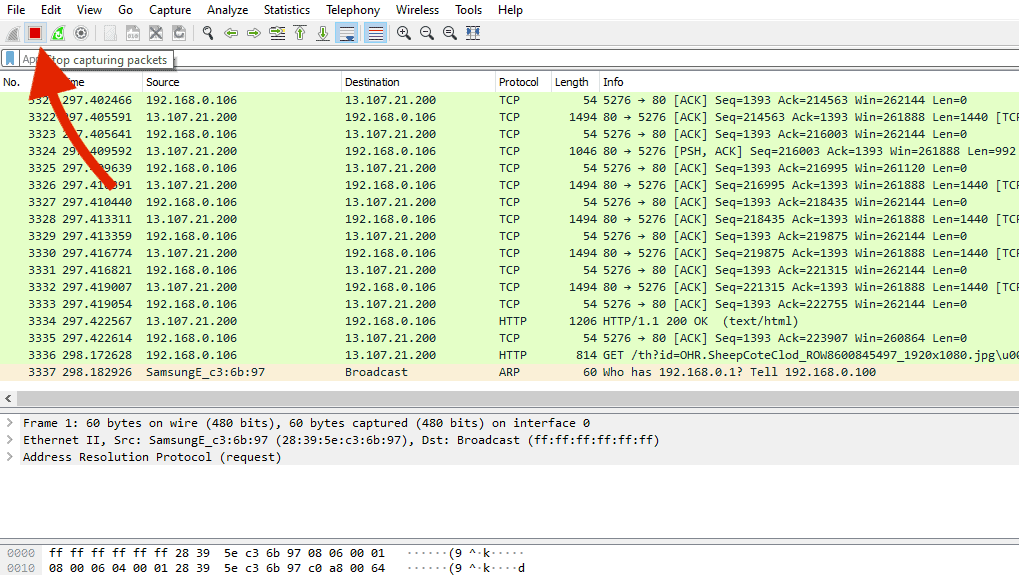
Wireshark is a free and open-source network protocol and packet analyzer. It captures network traffic packets and provides a human-readable interface for interpreting network-generated packets. Wireshark displays these network packets at a granular level, allowing network admins and also security administrators to go to the depth of the problem. Moreover, Wireshark also offers both real-time (promiscuous mode) and offline network traffic analysis (through saved traffic traces).
To make it easy to go through and understand, Wireshark provides a user-friendly interface with color codes, sorting filters, and protocol dissectors. The color coding presents different types of traffic, while filters enable users to narrow down to specific protocols they need. With protocol dissectors, users can examine the packets' contents in detail.
Wireshark is a free tool available for download at wireshark.org. It is supported on multiple platforms including Windows, OpenBSD, Unix, Linux, and Ubuntu.
6. NetworkMiner by Netresec
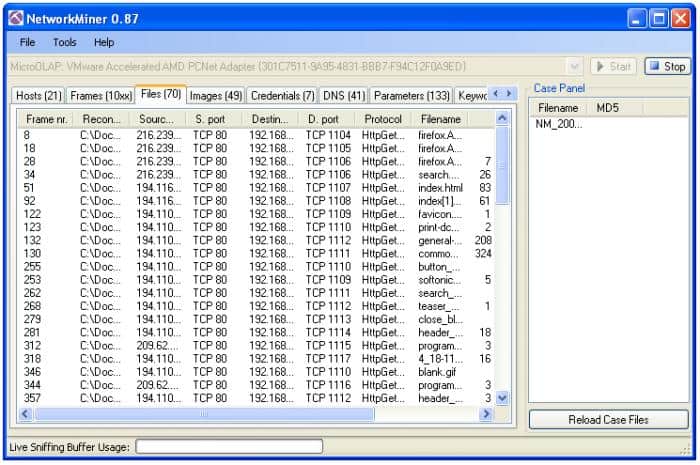
NetworkMiner (by Netresec) is an open-source Network Forensic Analysis Tool (NFAT) that works as a passive network sniffer. This tool can capture, analyze, and visualize network traffic. In addition, this network analyzer also comes with a user-friendly interface, making it easy to perform advanced network traffic analysis.
Network admins find it one of the best alternatives to Microsoft Network Monitor because it can also detect operating systems, hostnames, open ports, and data transferred over the network. Moreover, by parsing and reassembling PCAP capture files, NetworkMiner allows offline analysis.
With NetworkMiner, admins can also extract useful bits of information (files, images, emails, passwords) from network captures. Such capabilities simplify analysis and network monitoring.
NetworkMiner offers a free edition at no cost and a professional version priced at approximately 1200 USD. A free version is available for download. It is supported on Windows, Linux, macOS, and FreeBSD platforms.
7. LogicMonitor
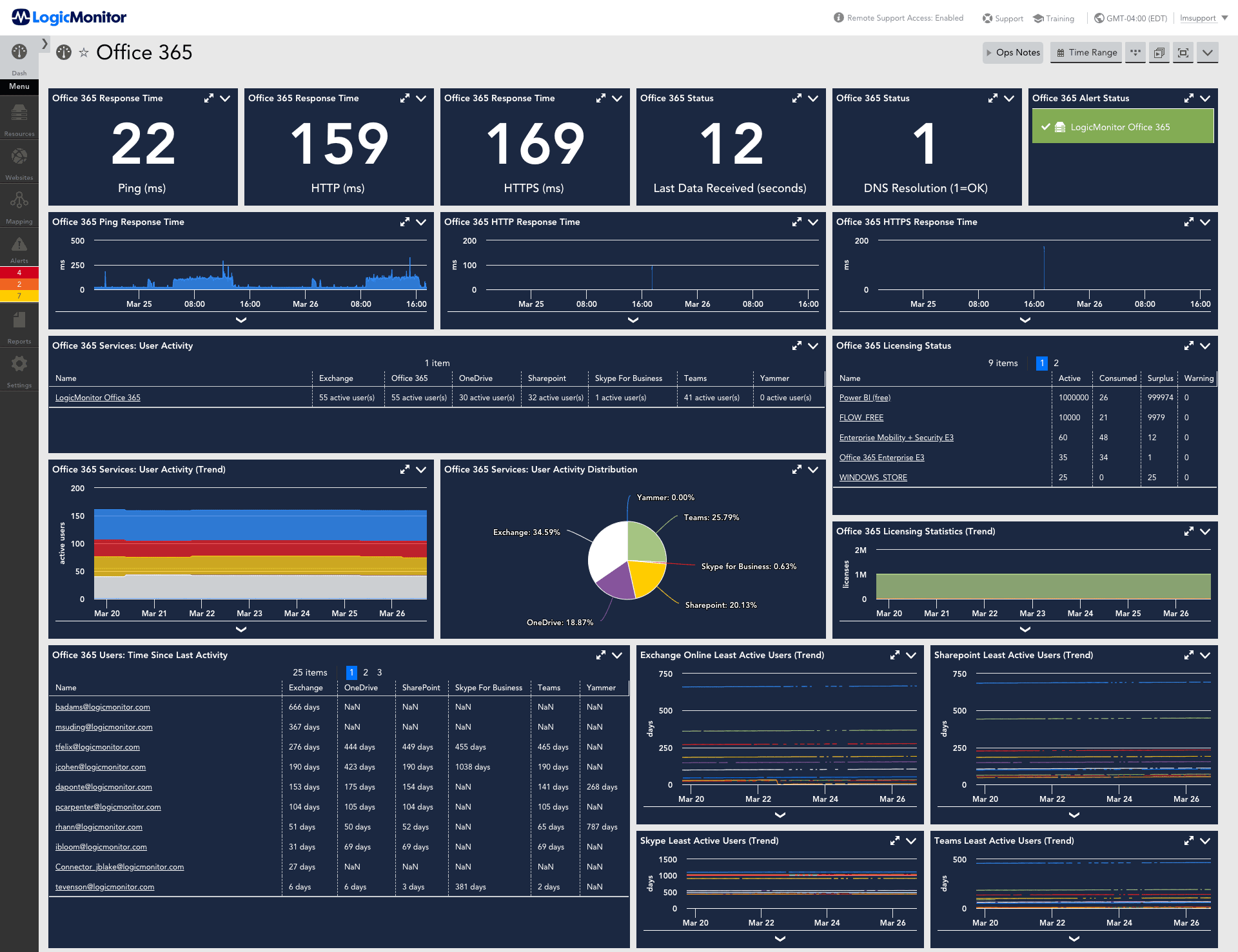
LogicMonitor is a cloud-based (with a SaaS approach) and automated performance monitoring solution. It can monitor every aspect of your infrastructure and systems, whether they are deployed on-premise, in the cloud, or in hybrid scenarios. LogicMonitor empowers you to monitor the data that matters so that you can react quickly to problems and be proactive with solutions.
LogicMonitor can monitor virtually any data center resource. It has a vast supported device database that grows weekly. Some features of LogicMonitor include infrastructure, networks, databases, cloud, servers, and APM. Additionally, LogicMonitor also comes with additional vital features like AIOPs, log analysis, website synthetics, alerting and reporting, workflows, escalation chains, and much more.
LogicMonitor offers custom pricing plans and a 14-day free trial for new users.
8. SolarWinds NetFlow Traffic Analyzer
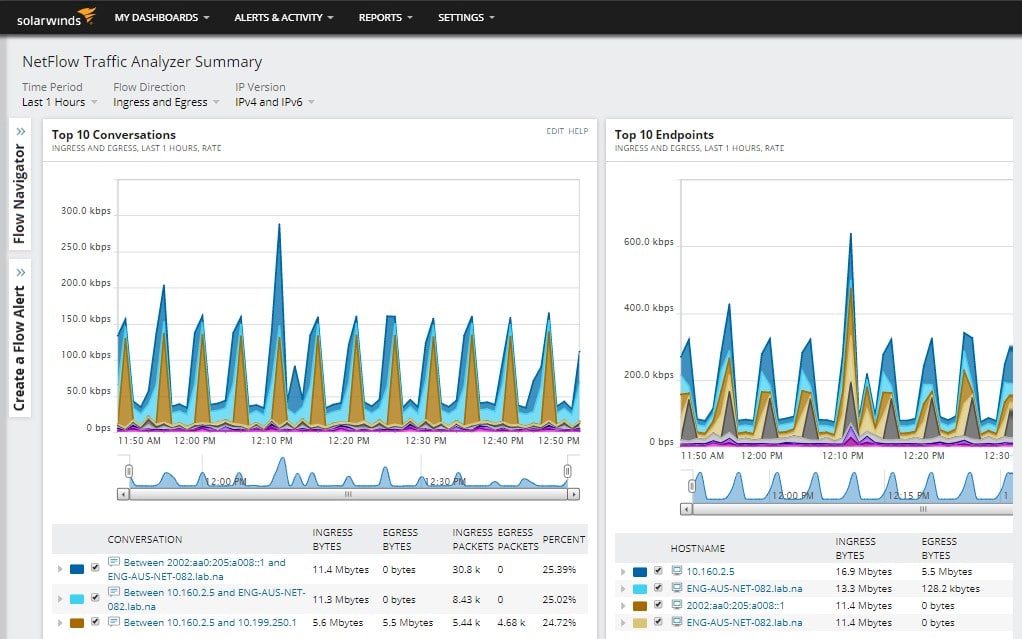
SolarWinds NetFlow Traffic Analyzer (NTA) is a network monitoring tool that uses NetFlow monitoring technologies to provide real-time visibility into bandwidth performance. NTA monitors and collects network flow records from various devices using either NetFlow v5, v9, Juniper J-Flow, NBAR2, or sFlow.
Key Features:
- Flow Navigator: Create and access personalized network traffic views. Also, navigate through network flow records efficiently.
- Multi-Vendor Monitoring: Monitor network traffic flow records from multiple vendors.
- Customizable Reports: Generate (and customize) reports tailored to specific network data needs
- Graphical Visualization: Visualize network data through graphical representations and quickly understand complex network information.
- Alerts Feature: Receive email or push notifications for problematic network signs. Alerts can help security admins take appropriate actions when issues arise.
SolarWinds NetFlow Traffic Analyzer offers two licensing options: Subscription Licensing and Perpetual Licensing, each with individual pricing. There is a 30-day free trial available. The tool is supported on Windows, Linux, SaaS, and FreeBSD platforms.
9. ManageEngine NetFlow Analyzer
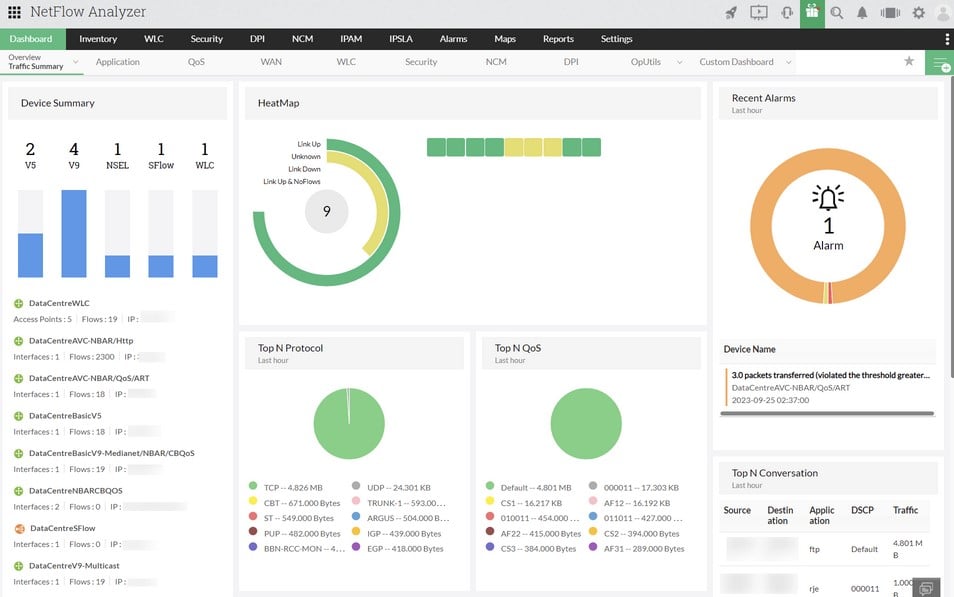
ManageEngine NetFlow Analyzer is a flow-based network traffic monitoring tool designed for in-depth traffic analysis. The tool uses various flow technologies including AppFlow, jFlow, IPFIX, sFlow, and NetFlow to give you real-time visibility into network bandwidth performance.
ManageEngine NetFlow Analyzer is a great alternative to Microsoft Network Monitor due to its robust features. It allows real-time monitoring capabilities, comes with a user-friendly interface, and allows much better scalability. For instance, with this tool, admins can collect and analyze network traffic patterns. It allows admins to identify bandwidth use by application, protocol, and IP address group.
In addition, NetFlow Analyzer offers customizable network traffic reports displaying historical data and identifying peak bandwidth usage. It also has an intuitive alerting system that users can configure to trigger based on conditions or thresholds.
ManageEngine NetFlow Analyzer offers two licensing models with custom pricing: Perpetual and Subscription. These are available in four editions: Professional/Standard, Enterprise, Service Packs, and Free. A 30-day free trial of the Professional or Enterprise editions is available. The tool is supported on Windows and Linux platforms.
10. Auvik
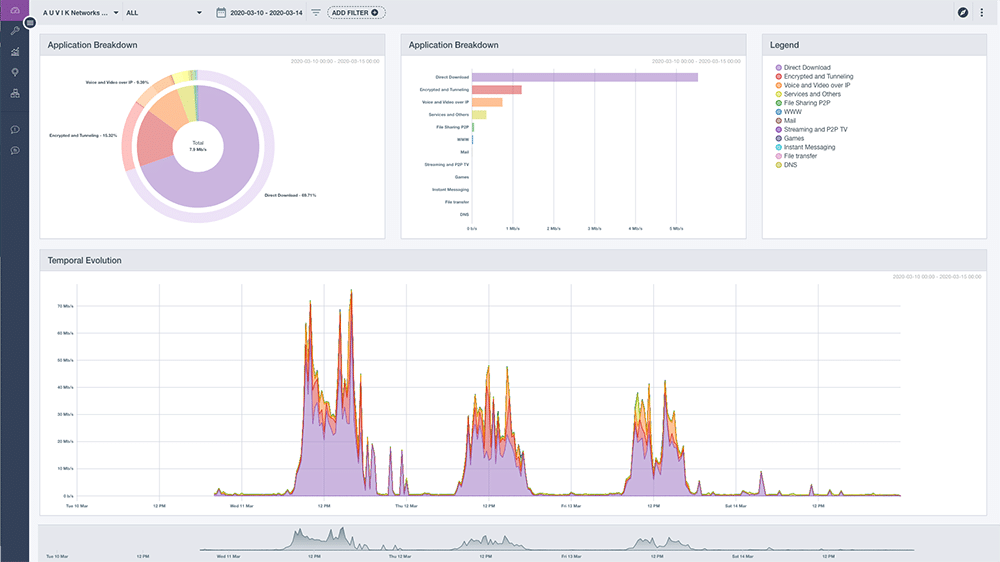
Auvik is a cloud-based network management and monitoring software that provides complete network visibility and control. This tool makes it an excellent alternative to Microsoft Network Monitor, as it simplifies and automates network monitoring and management (especially for Windows systems.).
Auvik is a great tool for preventing, detecting, and resolving issues quickly. Its key features include topology mapping, preconfigured monitoring & alerts, network infrastructure device availability monitoring, troubleshooting, configuration management, and automated backups.
The software also helps to improve security. It automatically discovers distributed IT assets, allowing users to see exactly where each device is connected and track network configuration changes. It also ensures automated security and performance updates, eliminating the need for ongoing maintenance.
Auvik offers two editions, Essential and Performance, both with custom pricing. A 14-day free trial is available. It is a cloud-based platform viewable from any modern web browser.
Factors To Consider When Choosing A Network Monitoring Tool
When evaluating alternatives for Microsoft Network Monitor, you need to consider a few factors. Such factors can help you choose the right tool to suit your organizational needs, from your infrastructure design to the number of devices to integrations.
Some key factors for choosing the right network monitoring tool include:
- Ease of Use Microsoft Network Monitor was easy to use. So when selecting an alternative network monitoring tool look for an intuitive User Interface (UI) that allows you to navigate and access features easily. The tool should have a user-friendly design that simplifies monitoring tasks. In addition, the learning curve for administrators should be smooth. Also, consider the configuration and setup process to ensure minimal downtime during implementation.
- Scalability Scalability is a critical factor to consider. Microsoft Network Monitor wasn’t a highly scalable solution. As your network grows, you require a monitoring tool that can handle the increasing number of devices and network traffic without compromising performance. So, evaluate how the tool scales and whether it can effectively accommodate your network's growth. The tool should be capable of handling expanding network infrastructures seamlessly.
- Real-time Monitoring Real-time monitoring capabilities are essential for promptly identifying and addressing network issues. The tool should provide live data updates, allowing you to track network performance, traffic, and anomalies as they happen. Additionally, look for features that enable customizable alerts and notifications. The tool should allow you to set up thresholds and receive instant notifications for critical events.
- Comprehensive Reporting To gain valuable insights into your network's performance and trends, the tool should offer comprehensive reporting. Look for tools that provide clear and visually appealing data visualizations, including graphs, charts, and even heat maps. Reports should give you access to historical data because it is crucial for trend analysis, capacity planning, and identifying recurring network issues.
- Network Mapping Network mapping features can help in various monitoring efforts. It helps in auditing, managing, and visualizing your network's topology. Choose a tool that can automatically discover and map your network devices, including workstations, switches, routers, and servers. The tool should find devices, inventory them, and generate visual representations of the network architecture. These network maps make it easier to identify dependencies, troubleshoot connectivity issues, and optimize network performance.
- Integration Capabilities Consider the compatibility of the monitoring tool with your existing network infrastructure and management systems. Look for network monitoring tools that can easily integrate with your network devices, protocols, and other software. In addition, consider APIs and plugins with popular platforms, such as IT service management or Security Information and Event Management (SIEM) systems. A good integration can enhance your network management capabilities and streamline operations.
- Cost-effectiveness Cost is always one of the most important factors. Always, assess the tool's pricing structure, including licensing models, plans, and any ongoing maintenance or support costs. It's paramount to balance the tool's cost with its value. Consider the long-term benefits and savings the tool can provide in terms of improved network performance, reduced downtime, and efficient troubleshooting. Also check whether the tool offers freeware, free trials, or demos, as these are all good starting points for testing the waters.
- Support and Updates When choosing network monitoring solutions, especially alternatives to Microsoft Network Monitor, always ensure the software provider offers reliable customer support and regular updates. Look for a vendor with a good reputation for providing timely and responsive customer support. Also, check whether the software receives regular updates and feature enhancements. Good to have additional support material, are also access to comprehensive documentation, knowledge bases, and user communities.
Final Verdict
In this post, we went through a few options, if you are looking for a reliable alternative to Microsoft Network Monitor, that are similar in capability, simplicity, and pricing. Although some tools are designed for SMBs to enterprises, they do offer freeware, which is a great replacement for the cost-efficiency of Microsoft Network Monitor.
The tools shown in this list offer a comprehensive overview of your network's performance, allowing it to pinpoint trouble and alert you quickly.
With so many options on the market, selecting a tool that fits your network's network monitoring requirements is crucial. Go with user-friendly software with an excellent graphical interface, traffic flow statistics, compatibility, live graphs, and network discovery features.
